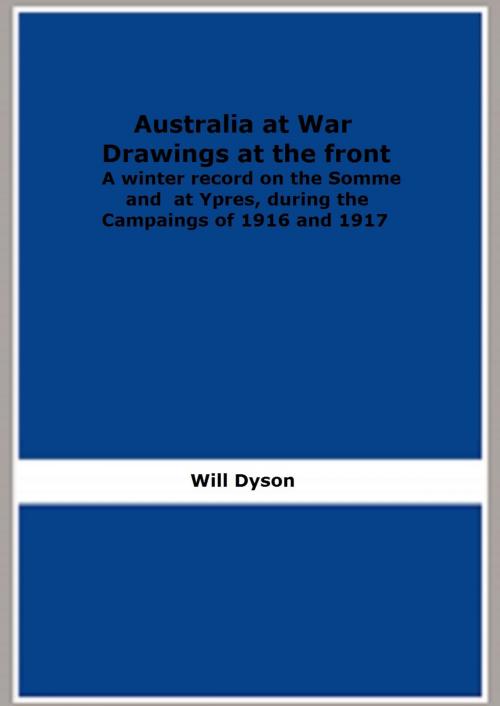Australia at War Drawings at the front: A winter record on the Somme and at Ypres, during the Campaings of 1916 and 1917
Nonfiction, History, Australia & Oceania, Military, World War I| Author: | Will Dyson | ISBN: | 1230002340432 |
| Publisher: | FB Editions | Publication: | May 25, 2018 |
| Imprint: | FB Editions | Language: | English |
| Author: | Will Dyson |
| ISBN: | 1230002340432 |
| Publisher: | FB Editions |
| Publication: | May 25, 2018 |
| Imprint: | FB Editions |
| Language: | English |
Everybody knows that Mr. Dyson, who has made these striking sketches of the great war in which he has himself been wounded, originally became famous as a caricaturist, probably the most original caricaturist of our time. To some it may even need a word of further explanation adequately to connect a caricaturist so fanciful with a tragedy so grave and grim. Nor indeed is the connection only that more obvious one, which has drawn so many men of genius into duties that are simply normal because they are national. Mr. Dyson is indeed as patriotic in external as he is public spirited in internal politics; but his case here must not be confused with what might have occurred if, in some national crisis, the late Phil May had drawn a cartoon for Sir John Tenniel, or if the late Dan Leno had sung, with all possible sincerity, a patriotic song. In such cases men might say that great artists were behaving like good citizens; but that it was rather of their ordinary than their extraordinary qualities that they were at that moment justly proud. The importance of Mr. Dyson’s work cannot be properly appreciated unless we realise that his patriotism and public spirit are extraordinary as well as ordinary; for to be extraordinary without being also ordinary is merely another name for being mad. Mr. Dyson in becoming more national does not become less individual; nor does he for the first time become serious. The graver work of such an artist will not be merely grotesque, if only because his most grotesque work was always full of gravity. His caricature was a criticism, and indeed a very severe criticism, of the whole modern world. And it is perhaps the severest of all criticisms on the modern world, that the one form of art that has rendered it most seriously and most subtly, is the art of caricature. Here it may well be left an open question whether this character in our time, as compared with former times, means that we more easily appreciate satirists, or merely that we more easily lend ourselves to satire.
Everybody knows that Mr. Dyson, who has made these striking sketches of the great war in which he has himself been wounded, originally became famous as a caricaturist, probably the most original caricaturist of our time. To some it may even need a word of further explanation adequately to connect a caricaturist so fanciful with a tragedy so grave and grim. Nor indeed is the connection only that more obvious one, which has drawn so many men of genius into duties that are simply normal because they are national. Mr. Dyson is indeed as patriotic in external as he is public spirited in internal politics; but his case here must not be confused with what might have occurred if, in some national crisis, the late Phil May had drawn a cartoon for Sir John Tenniel, or if the late Dan Leno had sung, with all possible sincerity, a patriotic song. In such cases men might say that great artists were behaving like good citizens; but that it was rather of their ordinary than their extraordinary qualities that they were at that moment justly proud. The importance of Mr. Dyson’s work cannot be properly appreciated unless we realise that his patriotism and public spirit are extraordinary as well as ordinary; for to be extraordinary without being also ordinary is merely another name for being mad. Mr. Dyson in becoming more national does not become less individual; nor does he for the first time become serious. The graver work of such an artist will not be merely grotesque, if only because his most grotesque work was always full of gravity. His caricature was a criticism, and indeed a very severe criticism, of the whole modern world. And it is perhaps the severest of all criticisms on the modern world, that the one form of art that has rendered it most seriously and most subtly, is the art of caricature. Here it may well be left an open question whether this character in our time, as compared with former times, means that we more easily appreciate satirists, or merely that we more easily lend ourselves to satire.















